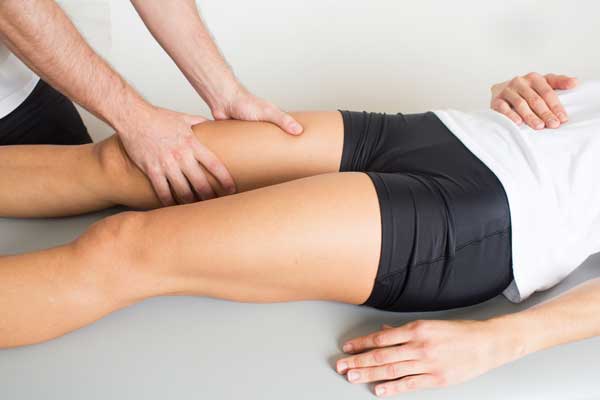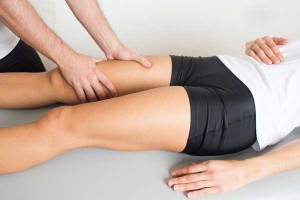
 The adductor muscle and tendon run along the inner thigh. An adductor strain (also known as a groin strain) is a common problem among many individuals who are physically active, especially in competitive sports. However, a groin strain can occur in non-athletes while performing day-to-day activities.
The adductor muscle and tendon run along the inner thigh. An adductor strain (also known as a groin strain) is a common problem among many individuals who are physically active, especially in competitive sports. However, a groin strain can occur in non-athletes while performing day-to-day activities.
Adductor injuries occur most commonly when there is a forced push-off to the side. High forces are generated in the adductor (groin) tendons while people are attempting to shift direction suddenly into the opposite direction. As a result, the adductor (groin) muscles contract rapidly which frequently leads to an injury.
Adductor/groin strains range from Grade 1 to Grade 3 and are classified as follows:
[su_list_fav]- Grade 1: a small number of muscle fibres are torn resulting in some pain but allowing full function
- Grade 2: a significant number of muscle fibres are torn with moderate loss of function
- Grade 3: all muscle fibres are ruptured, resulting in major loss of function
The majority of adductor/groin strains are Grade 2, although patients that are less physically fit can sustain a Grade 3 injury from a seemingly minor activity.
A current literature review indicates that those who have sustained a previous adductor (groin) injury are at the greatest risk for future injuries of this type. Of the eleven risk factors cited in this study, patients of older age and weak adductor (groin) muscles were the next most frequent predisposing factors after previous injuries (British Journal of Sports Medicine).
Among the list of contributing factors to the development of an adductor strain are:
- Poor flexibility
- Poor biomechanics
- Poor posture
- Low back stiffness
- Pelvic instability
As these are all clinical conditions that are regularly assessed and managed effectively by chiropractors, most professional teams and athletes employ chiropractic consultants as part of their specialist injury management team.
Adductor (groin) strains are a relatively common injury in both the athletic and non-athletic patient populations. Most chiropractors regularly see these injuries in clinical practice.
Anyone who complains of inner thigh or groin pain should make the chiropractor their first call. Advanced knowledge and expertise in assessing posture, flexibility and skeletal movement patterns make your chiropractor the perfect choice for the initial evaluation of this injury.
